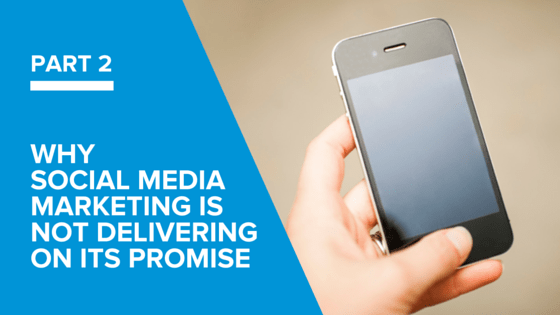
by Sean Garvey, InGo President
Last week, I talked about innovations in marketing and the fact that social media seems like a marketer’s dream. This week, let’s drill down further into this promise, the reality of social media ROI and its perception among marketers.
In a 2013 study of 750 companies across a wide-spectrum of industries, 88% said they “didn’t feel they could accurately measure the effectiveness of their social media campaigns. Fifty-two percent said that dealing with social media ROI was their biggest frustration.” With regard to the events industry in particular, a recent Lippman study stated that, while social media is the fastest growing portion of marketing budgets, it is “perceived as providing the worst ROI for events,” right alongside print advertising. How can this possibly be? A worse return than direct mail? Than telemarketing? Email? It seems unthinkable, and yet there it is.
One school of thought posits that it is simply a measurement issue; it’s having an effect, we just can’t measure it very well. But that is difficult to square with the amazing instrumentation that is part of the social media marketing package. The impressions are tracked, the clicks and click-throughs, more and more sophisticated algorithms measure the trends and eyeballs, and calibrate the “value” of digital advertising space on a moment to moment basis, and yet the sales impact still seems at best vague, at worst, non-existent. The best we can do so far is to track meta-measurements, counting likes and retweets and followers; what is called “social media engagement.” If the sales results were there to back it up, then no doubt meta-measurements of a campaign’s engagement would be enough to quiet the perception of social media marketing providing the “worst ROI,” and we would rest easy with the explanation that “it’s working, we’re just not sure how.” But we don’t, and the perception persists, even as we increase our spend. And the most likely explanation is that the results are not there.
A conclusion one might come to is that what is required is more and better instrumentation. And based on a whole hatful of emerging companies and their product offerings, it seems many have already concluded this. Re-targeting, digitally driven consumer profiles compiled real-time, social network and behavior analysis, all tied to more and more perfectly timed message delivery capabilities, indicate that this is the answer in vogue. But can we reasonably expect dramatically better results from this wave of improved instrumentation? Given the nature of the case, we might rightly expect incremental improvements, but it is just as likely that this trend may result in “digital stalking” legislation, and no indication that it will produce returns in line with our current expectations of social media. The answer isn’t more technological capability to improve the same dynamic. The dynamic itself needs to be changed. But how?
Join me next week as I answer the question by revealing how we can change our approach to marketing on social media and better unlock its potential. READ PART 3


